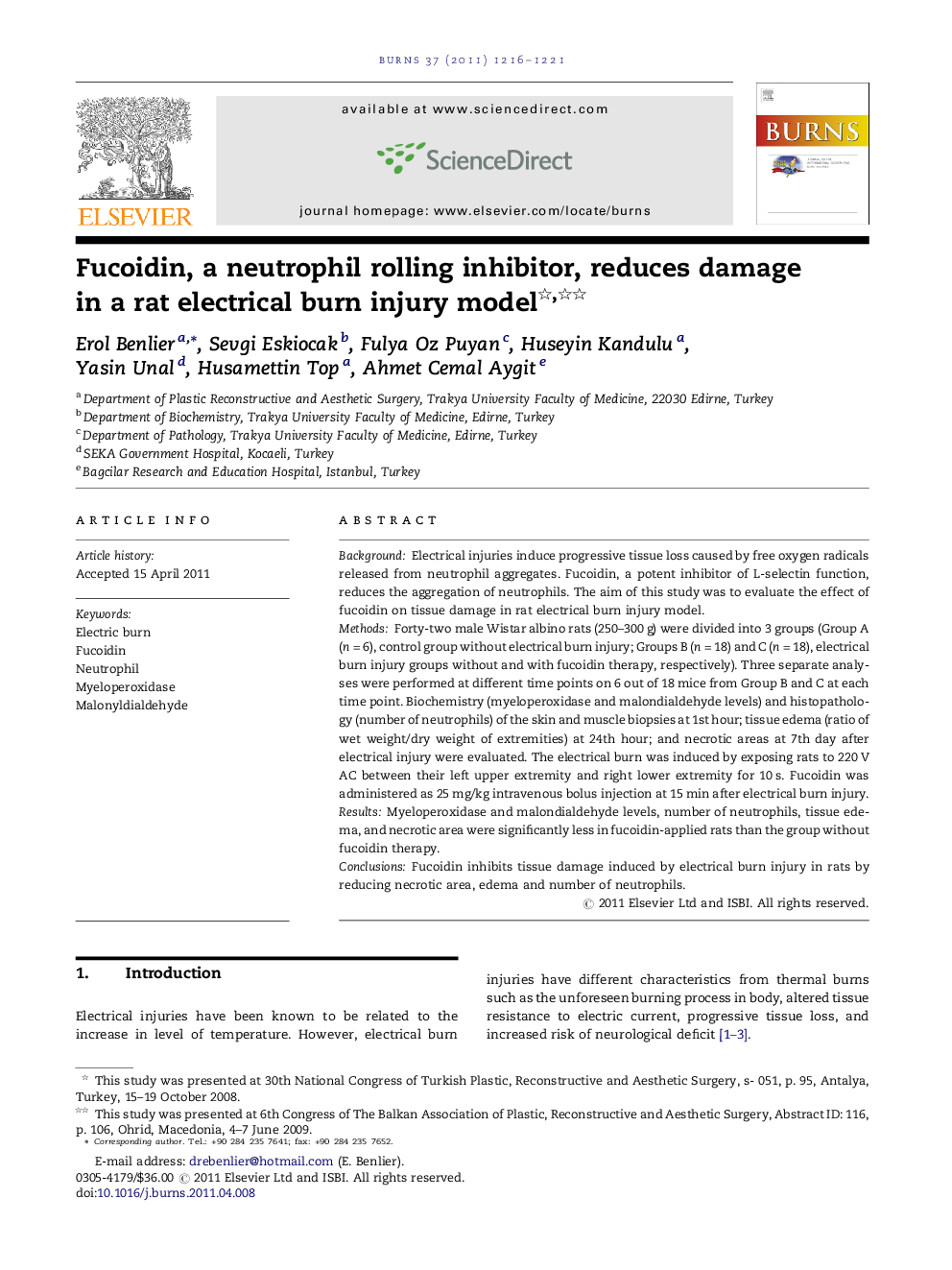| Article ID | Journal | Published Year | Pages | File Type |
|---|---|---|---|---|
| 3105482 | Burns | 2011 | 6 Pages |
BackgroundElectrical injuries induce progressive tissue loss caused by free oxygen radicals released from neutrophil aggregates. Fucoidin, a potent inhibitor of L-selectin function, reduces the aggregation of neutrophils. The aim of this study was to evaluate the effect of fucoidin on tissue damage in rat electrical burn injury model.MethodsForty-two male Wistar albino rats (250–300 g) were divided into 3 groups (Group A (n = 6), control group without electrical burn injury; Groups B (n = 18) and C (n = 18), electrical burn injury groups without and with fucoidin therapy, respectively). Three separate analyses were performed at different time points on 6 out of 18 mice from Group B and C at each time point. Biochemistry (myeloperoxidase and malondialdehyde levels) and histopathology (number of neutrophils) of the skin and muscle biopsies at 1st hour; tissue edema (ratio of wet weight/dry weight of extremities) at 24th hour; and necrotic areas at 7th day after electrical injury were evaluated. The electrical burn was induced by exposing rats to 220 V AC between their left upper extremity and right lower extremity for 10 s. Fucoidin was administered as 25 mg/kg intravenous bolus injection at 15 min after electrical burn injury.ResultsMyeloperoxidase and malondialdehyde levels, number of neutrophils, tissue edema, and necrotic area were significantly less in fucoidin-applied rats than the group without fucoidin therapy.ConclusionsFucoidin inhibits tissue damage induced by electrical burn injury in rats by reducing necrotic area, edema and number of neutrophils.
